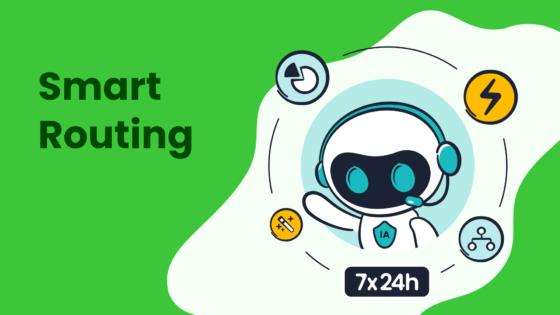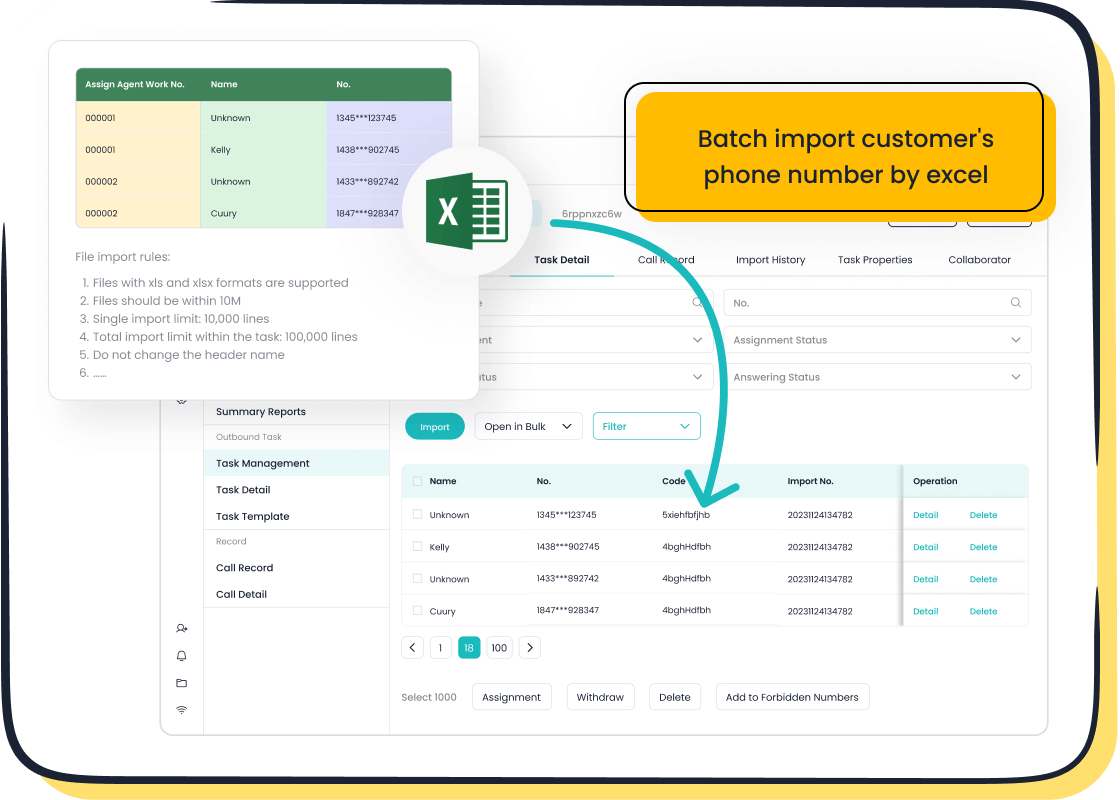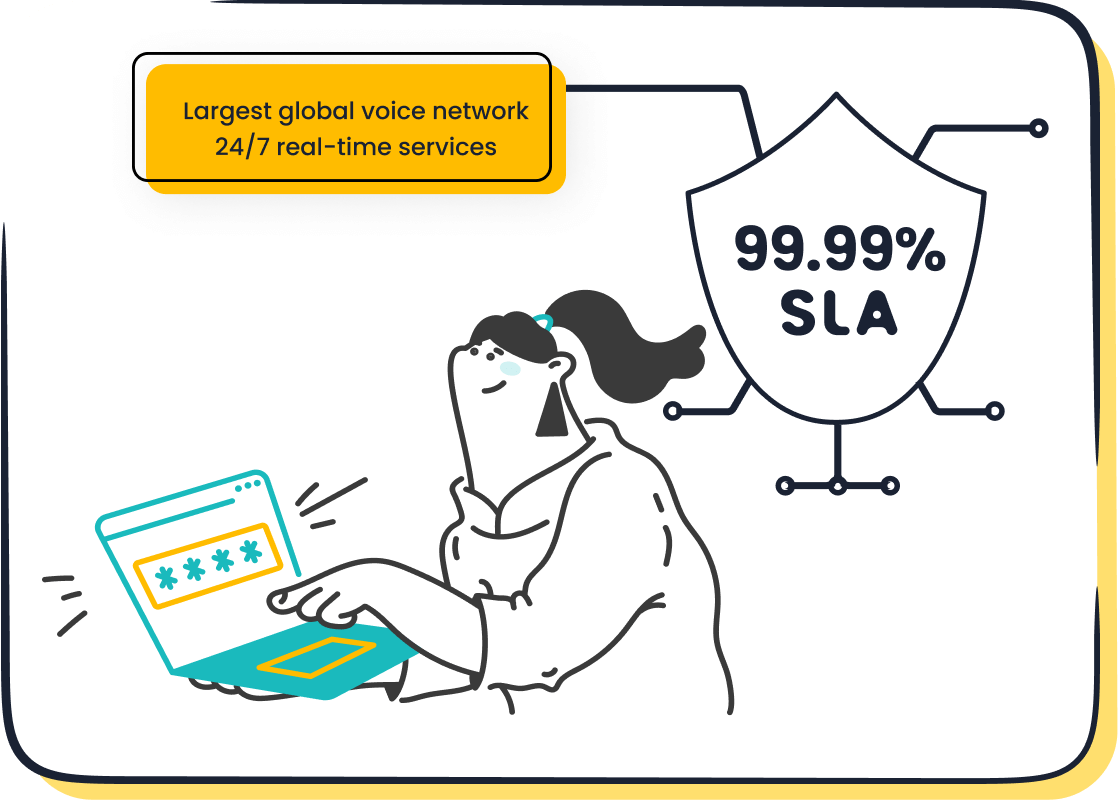Top Tips for Choosing CRM Software for Customer Service

Imagine running a business where every customer feels valued and every interaction runs smoothly. That’s the magic of CRM software customer service! It’s not just about tracking customer data—it’s about building stronger relationships and delivering exceptional service. Did you know 74% of businesses report better customer relationships after adopting CRM systems? Plus, companies using CRM see a 27% boost in customer retention.
By aligning your customer relationship management tools with your service goals, you can solve challenges like slow response times or missed opportunities. Tools like Sobot, which combine omnichannel support and automation, help you streamline operations and delight your customers. Ready to explore how the right CRM can transform your service game? Let’s dive in!
Define Your Business Needs and Goals
Choosing the right CRM starts with understanding your business inside and out. Before diving into features and pricing, take a step back and evaluate what your customer service team truly needs. This clarity will help you pick a CRM that aligns with your goals and delivers real value.
Identify Customer Service Challenges
What’s holding your customer service team back? Is it slow response times, missed inquiries, or a lack of customer insights? These challenges can frustrate your customers and overwhelm your team. A CRM system can help by organizing customer data and streamlining communication.
- Managing customer inquiries becomes easier with tools that track and prioritize tickets.
- CRMs provide access to complete customer profiles, so your team can resolve issues faster.
- You can even analyze churn patterns and identify at-risk customers to improve retention.
For example, Samsung used Sobot’s omnichannel solution to unify its communication channels and improve agent efficiency by 30%. This helped them handle inquiries faster and achieve a 97% customer satisfaction rate. Addressing your challenges with the right CRM can lead to similar results.
Set Clear Objectives for CRM Implementation
Once you’ve identified your challenges, it’s time to set goals. What do you want to achieve with your CRM? Maybe you’re looking to boost productivity, reduce costs, or improve customer loyalty. Clear objectives will guide your CRM implementation and help you measure success.
Take QIAGEN, for instance. They aimed to save time on manual tasks and improve customer satisfaction. By setting these goals, they achieved a 64% reduction in vendor costs and streamlined their processes. When you choose a CRM, having clear objectives ensures you get the most out of your investment.
Assess Team Size and Customer Interaction Volume
Your team size and the number of customer interactions you handle daily play a big role in choosing the right CRM. A small team might need a simple solution, while larger teams require advanced features like automation and analytics.

If your business handles high interaction volumes, a CRM with omnichannel support, like Sobot’s Voice/Call Center, can be a game-changer. It offers smart call routing, bulk outbound tasks, and real-time monitoring to keep your operations running smoothly. Plus, its scalability ensures it grows with your business.
By understanding your team’s needs and workload, you can choose a CRM that fits perfectly and supports your customer service goals.
Identify Key CRM Features for Customer Service

When you choose a CRM, the features it offers can make or break your customer service strategy. The right tools help you manage interactions, automate workflows, and gain insights that drive better decisions. Let’s explore the must-have CRM features that can transform how you serve your customers.
Contact and Interaction Management
Imagine having all your customer data in one place. Contact and interaction management features make this possible. These tools let you track every conversation, email, and call, ensuring your team has the context they need to deliver personalized service.

With a CRM system like Sobot’s Voice/Call Center, you can unify customer information into a single workspace. This means no more switching between platforms or losing track of important details. Smart call routing ensures inquiries reach the right agent, while AI-powered voicebots handle repetitive tasks, freeing up your team for more complex issues.
By logging interactions and tracking resolutions, you’ll improve response times and build stronger relationships. Samsung, for example, used Sobot’s omnichannel solution to unify communication channels, boosting agent efficiency by 30% and achieving a 97% customer satisfaction rate.
Automation and Workflow Optimization
Automation is the secret sauce for efficient customer service. It streamlines repetitive tasks, allowing your team to focus on building relationships and solving problems. Here’s how automation can make a difference:
- It enhances efficiency by managing tasks like ticket prioritization and follow-ups.
- Personalized responses become faster, improving customer satisfaction and loyalty.
- Teams can shift their focus to strategic activities, boosting overall productivity.

Sobot’s Voice/Call Center takes automation to the next level with features like bulk outbound tasks and rule-based workflows. These tools ensure your team spends less time on manual processes and more time delivering exceptional service. Whether it’s routing calls based on priority or automating outbound campaigns, automation helps you stay ahead of customer expectations.
Reporting and Analytics for Insights
Data is your best friend when it comes to improving customer service. Reporting and analytics features in CRM software customer service help you measure performance and identify areas for improvement.
Metrics like customer turnover, first call resolution (FCR), and net promoter score (NPS) provide valuable insights. For example:
| Metric | Description |
|---|---|
| Customer turnover | Percentage of customers lost over a certain period, indicating retention issues. |
| Net promoter score (NPS) | Measures customer satisfaction and likelihood of recommending the business. |
| First call resolution (FCR) | Percentage of customer issues resolved on the first contact, indicating support efficiency. |

Sobot’s platform offers real-time monitoring and analytics, giving you a clear view of your team’s performance. You can track call data, analyze trends, and make informed decisions to optimize your operations. With these insights, you’ll not only improve efficiency but also enhance customer satisfaction.
Omnichannel Support and Integration
Have you ever reached out to a company through email, only to follow up on social media and feel like you’re starting from scratch? That’s where omnichannel support comes in. It ensures all your communication channels work together seamlessly, so your customers never have to repeat themselves.

Omnichannel CRM systems unify customer interactions across platforms like email, chat, social media, and phone. This integration gives your team a complete view of each customer’s journey, helping them provide faster and more personalized service. For example, Sobot’s omnichannel solution consolidates all communication channels into one workspace. Whether a customer contacts you via WhatsApp or a phone call, your agents can access their history instantly, ensuring a smooth experience.
The benefits of omnichannel support go beyond convenience. Companies that adopt this strategy see significant improvements in customer engagement and business performance. Take a look at these stats:
| Metric | Omnichannel Companies | Non-Omnichannel Companies |
|---|---|---|
| Year-over-Year Revenue Increase | 9.5% | 3.4% |
| Customer Retention Rate | 89% | 33% |
| In-store Spending Increase | 4% | N/A |
| Online Spending Increase | 10% | N/A |
These numbers show how omnichannel CRM systems can boost customer satisfaction and loyalty. By providing a consistent experience across channels, you’ll not only retain more customers but also encourage them to spend more.
Sobot’s Voice/Call Center takes this a step further with features like smart call routing and AI-powered voicebots. These tools ensure inquiries reach the right agent quickly, reducing wait times and improving first-contact resolution rates. Plus, with global number availability and time zone support, you can serve customers worldwide without missing a beat.
Tip: If you’re looking to enhance your customer relationship management strategy, start by integrating your communication channels. It’s a game-changer for both your team and your customers.
Self-Service Portals and Knowledge Bases
Sometimes, customers just want to solve problems on their own. That’s where self-service portals and knowledge bases come in. These tools empower your customers to find answers without waiting for an agent, saving time for everyone involved.
A well-designed knowledge base offers step-by-step guides, FAQs, and troubleshooting tips. Customers can access this information anytime, resolving issues in minutes instead of hours. For instance:
- Self-service portals reduce repetitive inquiries by providing instant solutions.
- Internal knowledge bases help your team find information quickly, minimizing hold times.
- External knowledge bases improve customer satisfaction by offering 24/7 access to solutions.
Sobot’s AI-powered chatbot takes self-service to the next level. It’s multilingual and available 24/7, guiding customers to the right resources or resolving simple queries instantly. This not only enhances scalability but also frees up your agents to focus on more complex issues.
Imagine a customer needing help with a product setup. Instead of waiting on hold, they find a detailed guide in your knowledge base. Problem solved in minutes! This kind of efficiency improves customer satisfaction and reduces your team’s workload.
Note: Investing in self-service tools doesn’t just benefit your customers. It also boosts your team’s productivity and helps you scale your operations effortlessly.
Evaluate Integration and Compatibility with Existing Systems
When choosing a CRM, integration and compatibility with your existing tools are critical. A seamless connection between systems ensures your team can work efficiently without juggling multiple platforms. Let’s explore how to evaluate integration capabilities and plan for a smooth transition.
Ensure Seamless Integration with Tools Like Sobot Voice/Call Center

Your CRM should work hand-in-hand with tools like Sobot Voice/Call Center to enhance customer interactions. Seamless integration allows agents to access customer data, update records, and provide personalized service—all from one platform. This improves operational efficiency and boosts customer satisfaction.
For instance, a report highlights that integrating CRM systems with call center solutions can lead to higher conversion rates and better customer experiences. With Sobot’s Voice/Call Center, you get features like smart call routing and a unified workspace. These tools ensure your team has everything they need to resolve issues quickly and effectively.
Tip: Look for CRMs that offer drag-and-drop integration with your existing tools. This saves time and reduces the risk of errors during setup.
Assess API and Third-Party Integration Capabilities
APIs and third-party integrations are game-changers for CRM adoption. They allow your CRM to connect with other software, streamlining workflows and reducing manual tasks. Here’s how these capabilities impact CRM adoption:
| Evidence Description | Impact on CRM Adoption |
|---|---|
| API integration reduces manual data entry and streamlines processes. | Enhances user experience and efficiency, leading to higher adoption rates. |
| Integrations improve product value by enabling effective lead engagement and faster ticket resolution. | Increases retention rates and makes the product more appealing to users. |
| Compatibility with popular CRM systems across different markets. | Expands market reach and attracts diverse customer segments, boosting adoption. |
Sobot’s solutions, like its omnichannel platform, excel in integration. They connect seamlessly with tools like Salesforce and Shopify, ensuring your team can manage customer interactions without switching systems.
Plan for Smooth Data Migration
Data migration can feel overwhelming, but a solid plan makes it manageable. Follow these steps to ensure a smooth transition:
- Prepare the Team: Train your team and clarify roles.
- Review Source and Target CRM: Document workflows and data structures.
- Spend Time on Data Mapping: Map data fields accurately to avoid loss.
- Create Migration Tool: Use automated tools to reduce errors.
- Secure Data Backup: Back up data to prevent permanent loss.
- Run Tests: Test migrations to identify and fix issues early.
Sobot’s CRM solutions simplify data migration with user-friendly tools and expert support. Whether you’re transferring customer profiles or interaction histories, Sobot ensures your data remains secure and accessible.
Note: A well-executed migration not only protects your data but also sets the stage for a successful CRM implementation.
Assess Scalability and Customization Options
When choosing a CRM, you need to think long-term. A system that works for you today might not meet your needs tomorrow. That’s why scalability and customization are essential. Let’s explore how these factors can future-proof your customer relationship management strategy.
Choose a CRM That Grows with Your Business
Your business won’t stay the same size forever. As it grows, so will your customer base and operational demands. A scalable CRM ensures your system can handle this growth without breaking a sweat.
- It adapts to increasing data volumes and user numbers.
- It prevents performance issues, even as your operations expand.
- It eliminates the need for costly system overhauls.

For example, Sobot’s Voice/Call Center offers a scalable CRM solution that supports businesses of all sizes. Whether you’re managing a small team or a global operation, its features like global number availability and AI-powered voicebots grow with you. This ensures your customer service remains efficient and reliable, no matter how big your business gets.
Tip: Investing in a scalable CRM system now saves you from headaches later. It’s like buying a house with room to expand—you’re ready for whatever the future holds.
Explore Customization Features for Unique Needs
Every business is unique, and your CRM should reflect that. Customization allows you to tailor the system to your specific requirements, making it more effective and user-friendly.
Here’s how customization can benefit you:
- Modify dashboards to focus on metrics like customer retention or sales performance.
- Create workflows that match your processes, such as automated follow-ups or task assignments.
- Customize forms to capture the exact data you need, from customer preferences to lead details.
Sobot’s omnichannel solution excels in customization. It lets you integrate tools like Salesforce and Shopify while adapting to your unique workflows. Whether you need tailored reports or specific data fields, Sobot ensures your CRM fits your business like a glove.
Note: Customization isn’t just about convenience. It’s about making your CRM work harder for you, delivering insights and efficiencies that drive success.
Consider Industry-Specific CRM Solutions
Different industries have different needs. A one-size-fits-all approach rarely works. That’s where industry-specific CRM solutions come in. They address unique challenges and offer features tailored to your sector.
| Benefit Description | Impact on Industry |
|---|---|
| De-risk cloud migrations | Reduces potential operational risks |
| Reduce the burden of regulatory compliance | Eases adherence to regulations |
| Drive better software adoption | Increases user engagement |
| Focus the front office on value-added work | Improves customer service |
For instance, Sobot’s solutions cater to industries like retail, financial services, and gaming. Its omnichannel platform helps retail businesses manage customer interactions across email, social media, and chat. In financial services, it simplifies compliance and enhances customer trust. These tailored features ensure you get the most out of your CRM, no matter your industry.
Tip: Look for a CRM that understands your industry. It’s the key to unlocking new efficiencies and delivering exceptional service.
Compare Pricing and Budget Considerations
Choosing the right CRM isn’t just about features—it’s also about finding a solution that fits your budget. Let’s break down how to evaluate pricing plans and ensure you’re getting the best value for your investment.
Understand Pricing Models and Total Cost of Ownership
CRM pricing can vary widely depending on the platform and features. Some systems charge per user, while others offer flat rates or custom packages. Here’s a quick look at the factors that influence costs:
| Factor | Description |
|---|---|
| User Licensing | Pricing typically ranges from $10 to $300+ per user monthly based on platform and features. |
| Feature Tiers | Advanced features often come at higher price points. |
| Deployment Options | Cloud solutions offer predictable costs, while on-premise systems require larger upfront investments. |
| Customization Requirements | Additional costs may arise for tailored features. |
| Integration Needs | Connecting with existing systems can add to expenses. |
| Implementation and Training | These can add 25-40% to first-year costs. |
| Hidden Costs | Watch out for data migration, maintenance, and user adoption challenges. |
For example, Sobot’s Voice/Call Center offers a SaaS rental model, which eliminates hefty upfront costs. Its predictable pricing ensures you can manage your budget effectively while enjoying advanced features like AI-powered voicebots and global number availability.
Balance Features with Budget Constraints
Balancing features and budget is key to maximizing your investment. Start by identifying the must-have functionalities for your business. Then, consider trade-offs for less critical features. Here are some tips:
- Focus on essential tools like automation, omnichannel support, and analytics.
- Negotiate with vendors for better pricing or bundled deals.
- Explore scalable solutions that grow with your business.
For instance, businesses often allocate more budget to critical areas like automation and customer insights while opting for cost-effective infrastructure. Sobot’s solutions, such as its omnichannel platform, provide a perfect balance. They offer robust features without breaking the bank, making them ideal for businesses of all sizes.
Evaluate Long-Term Value and ROI
Investing in a CRM system isn’t just about immediate benefits—it’s about long-term value. Did you know the CRM market is projected to hit $103 billion by 2023? That’s because businesses see significant returns, with an average ROI of $30.48 for every dollar spent.
Here’s what you can expect from a well-chosen CRM:
| Metric | Value |
|---|---|
| ROI of CRM | $8.71 for every dollar spent |
| Productivity increase | 20% to 30% growth in business |
| Customer satisfaction increase | Up to 45% increase |
| Cost savings on licensing fees | Up to 71% savings |
Sobot’s CRM solutions deliver measurable results. Features like real-time analytics and smart call routing boost productivity and customer satisfaction. By choosing a scalable and efficient system, you’ll save costs and see long-term growth.
Tip: Always consider the total cost of ownership, not just the upfront price. A CRM that delivers high ROI and scales with your business is worth the investment.
Research Vendors and Test CRM Options
Choosing the right CRM software customer service solution can feel overwhelming with so many options out there. That’s why researching vendors and testing their products is a crucial step. It helps you understand how well a CRM aligns with your business needs and whether it can truly solve your challenges. Let’s break this process into three actionable steps.
Read Customer Reviews and Testimonials
Customer reviews are like a sneak peek into what you can expect from a CRM system. They give you real-world insights into how the software performs and whether it delivers on its promises. When reading reviews, focus on these key points:
- Ease of Use: Are users finding the CRM intuitive and easy to navigate?
- Performance: Does the software handle high interaction volumes without glitches?
- Support Quality: How responsive and helpful is the vendor’s support team?
For example, many businesses praise Sobot’s Voice/Call Center for its seamless integration and reliable uptime of 99.99%. Samsung, a global leader in technology, achieved a 97% customer satisfaction rate after implementing Sobot’s omnichannel solution. Reviews like these can help you gauge whether a CRM is worth your investment.
Tip: Don’t just rely on star ratings. Dive into detailed testimonials to understand the specific benefits and challenges users experienced.
Request Demos and Free Trials
A demo or free trial is your chance to test-drive a CRM before committing. It lets you explore the features, evaluate the interface, and see if the software meets your needs. However, not all trials are created equal. Here’s what to watch for:
| Factor | Description |
|---|---|
| Lack of Immediate Value | Users abandon trials if they don't quickly see benefits. |
| No Personalization or Guidance | Many trials lack support, leaving users frustrated and unsure of next steps. |
| Decision Fatigue | Customers face numerous options, complicating their commitment even if they like the software. |
| Free Users Are Not Serious Buyers | Many trial users are just exploring without intent to purchase. |
| Hands-On Demos and Consultation | Live demos tailored to customer needs are more effective than self-guided trials. |
| Conversion Rate | Only 20-30% of trial users typically convert to paying customers. |
| Influence of Exclusive Deals | Nearly 60% of consumers say exclusive deals impact their purchase decisions. |
A live demo, like the ones offered by Sobot, can be especially helpful. It allows you to see features like smart call routing and AI-powered voicebots in action. You can also ask questions and get personalized recommendations. This hands-on experience ensures you’re making an informed decision.
Note: During the trial, test key functionalities like reporting, automation, and omnichannel support. These features are essential for effective customer relationship management.
Evaluate Vendor Support and Customer Support Options
Even the best CRM software customer service solution can fall short without strong vendor support. You need a partner who’s there to help when things go wrong or when you need guidance. Here’s what to consider:
- Multi-Channel Support: Can you reach the vendor through your preferred method, like email, chat, or phone?
- Quick Issue Resolution: Does the support team resolve problems promptly to avoid disruptions?
- Proactive Engagement: Does the vendor offer regular updates, training, or tips to help you maximize the CRM’s potential?
Sobot excels in customer support options, offering 24/7 assistance and a comprehensive knowledge base. Their proactive approach ensures you’re always ahead of the curve, whether it’s through training sessions or performance insights. Businesses like Samsung have benefited from this level of support, achieving higher efficiency and customer satisfaction.
Tip: Don’t underestimate the value of good support. It can make or break your experience with a CRM system.
Ensure Data Security and Support Services
When it comes to customer relationship management, protecting your customers' data is non-negotiable. A secure CRM not only safeguards sensitive information but also builds trust with your customers. Let’s explore how you can ensure your CRM system meets the highest security standards.
Verify Compliance with Data Protection Standards
Data protection laws like GDPR and CCPA are here to stay. Your CRM must comply with these regulations to avoid hefty fines and maintain customer trust. Look for systems that prioritize compliance by offering features like data anonymization, consent tracking, and audit logs.
For example, Sobot’s CRM solutions are designed with compliance in mind. They provide encrypted data transfer and secure storage, ensuring your business meets global data protection standards. By choosing a compliant CRM, you can focus on serving your customers without worrying about legal risks.
Tip: Always ask vendors about their compliance certifications. It’s a quick way to gauge their commitment to data security.
Assess Security Features and Encryption
A robust CRM system should come with advanced security features to protect against breaches. Here’s what to look for:
- Data Encryption: Ensures sensitive information remains unreadable to unauthorized users.
- Access Controls: Limits data access based on roles, reducing the risk of internal misuse.
- Regular Backups: Protects your data from loss due to system failures or cyberattacks.
These features are essential for safeguarding customer data and complying with regulations. For instance, Sobot’s Voice/Call Center offers encrypted data transfer and secure dialing, ensuring your communications remain private. With a 99.99% uptime, you can trust that your data is always accessible and protected.
Did you know? Businesses that implement these security measures see fewer breaches and higher customer confidence.
Look for Reliable Vendor Support and Maintenance
Even the most secure CRM needs ongoing support to stay effective. A reliable vendor ensures your system remains updated and secure. Here’s what to consider:
- 24/7 Support: Quick assistance minimizes downtime and keeps your operations running smoothly.
- Proactive Maintenance: Regular updates protect against emerging threats.
- Training Resources: Empower your team to use the CRM effectively and securely.
Sobot excels in this area by offering round-the-clock support and regular system updates. Their proactive approach ensures your CRM stays ahead of potential vulnerabilities. Samsung, for example, benefited from Sobot’s full-cycle support, achieving a 97% customer satisfaction rate.
Note: A vendor that prioritizes support and maintenance is more than a service provider—they’re a partner in your success.
Choosing the best CRM for your business doesn’t have to be overwhelming. Start by defining your goals and challenges, then evaluate CRM systems based on features, scalability, and budget. A structured approach, like ranking software options and conducting demos, ensures you make informed decisions.
Aligning CRM features with your business needs is crucial. Experts like Prashanth Krishnaswami highlight how cross-functional alignment improves efficiency and response times. Tools like Sobot’s Voice/Call Center integrate communication channels into one platform, streamlining operations. Samsung’s success with a 30% efficiency boost and a 97% satisfaction rate proves its effectiveness.
Ready to transform your customer relationship management? Explore solutions like Sobot to enhance your service and build lasting customer relationships.
FAQ
What is a CRM, and why is it important for customer service?
A CRM is software that helps you manage customer interactions and data. It’s essential for customer service because it organizes information, tracks communication, and improves response times. For example, using a CRM system like Sobot’s Voice/Call Center can boost efficiency and enhance customer satisfaction.
How does a CRM system improve customer relationships?
A CRM system centralizes customer data, making it easier to personalize interactions. When you know your customers’ preferences and history, you can offer tailored solutions. This builds trust and loyalty. Businesses using customer relationship management tools often see higher retention rates and better customer experiences.
Can a CRM integrate with my existing tools?
Yes, most CRMs integrate seamlessly with tools like email, chat, and call centers. For instance, Sobot’s solutions connect with platforms like Salesforce, ensuring smooth workflows. Integration saves time and reduces errors, helping your team focus on delivering excellent service.
Is a CRM suitable for small businesses?
Absolutely! A CRM isn’t just for large companies. Small businesses benefit from features like automation and analytics, which save time and improve efficiency. Scalable options, like Sobot’s Voice/Call Center, grow with your business, making them a smart investment for any size.
How do I choose the right CRM for my business?
Start by identifying your needs and goals. Look for features like omnichannel support, automation, and analytics. Test options through demos or trials. For example, Sobot offers live demos to help you explore its capabilities. Choose a CRM that aligns with your budget and long-term objectives.
See Also
Essential Advice for Selecting Social Media Support Tools
Key Characteristics of Effective CRM Call Center Solutions
Best Customer Support Software Options for 2024